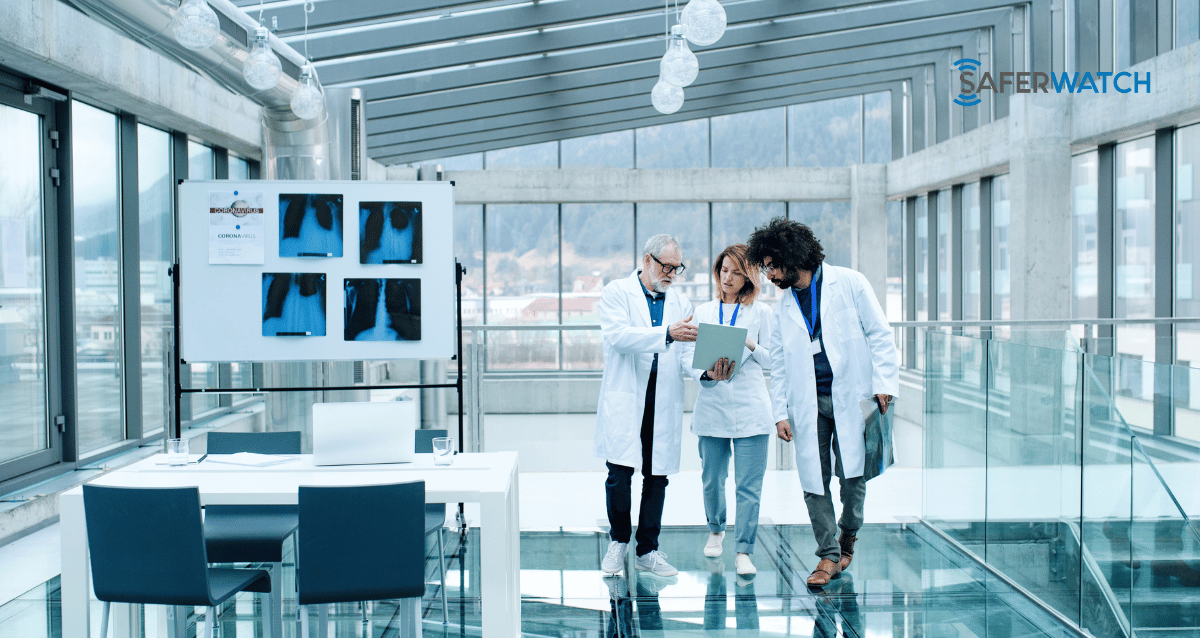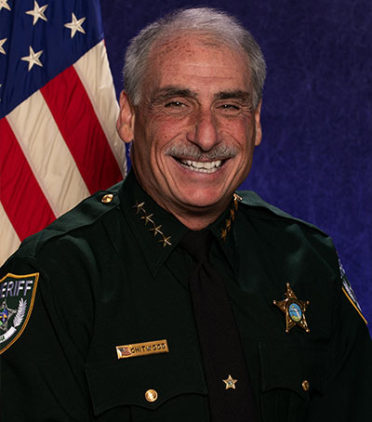Digital Transformation in Healthcare: New Security Systems in Hospitals

Digital Transformation in Healthcare: New Security Systems in Hospitals
As healthcare security takes center stage in a world of constant change, hospitals and their staff must ensure the safety not just of themselves but also that of patients and visitors. Healthcare providers have access to more technology than ever before which helps them tackle these special issues with increased focus on safety procedures. Opening up possibilities for revolutionary solutions transforming today’s industry. Are you ready to investigate how this technological revolution is enhancing healthcare security? Let’s go!
Key Takeaways
- Healthcare facilities can prioritize staff safety through training, security systems, and access control measures.
- AI-powered security solutions utilize artificial intelligence to provide comprehensive protection for patients and staff.
- Collaborating with subject matter experts ensures compliance with industry standards while crisis intervention and de-escalation training equip healthcare staff to respond effectively in emergencies.
Prioritizing Staff Safety in Hospitals
Healthcare facilities have a responsibility to provide a secure and safe environment for staff, patients, and visitors. To achieve this objective, they must implement an effective safety management system which includes security systems such as access control measures, surveillance cameras and alarms for monitoring potential threats, and training programs educating personnel on procedures.
Along with the presence of guards or patrols providing assistance in case of incidents. Many experienced teams offer specialized solutions tailored to meet healthcare providers’ needs when it comes to managing health and workplace violence prevention through security services such as site officers and access controls. By implementing these strategies, hospitals can create strong defenses against risks while ensuring everyone present feels protected within their facility walls.
Addressing Workplace Violence
Healthcare facilities must take proactive steps to ensure the safety of staff, patients, and visitors from workplace violence. Through training programs designed to recognize potential hostile situations and de-escalate them, security systems such as surveillance cameras with access control measures for secure entry/exit protocols can be employed along with trained security officers monitoring at all times.
Integrating advanced technologies like video analytics or AI-powered solutions may enhance protection in a healthcare facility, which is crucial following international association standards relating to hospital security. Applying these preventative strategies will create an environment that ensures better overall safety inside any given healthcare setting.
The Role of Security Officers
Healthcare facilities have an obligation to prioritize safety and security for hospital personnel, patients, guests, and visitors. With a security program like the ones offered by SaferWatch, these places are able to ensure occupational safety standards set by health administration with dedicated training.
This comprehensive approach not only provides a safe environment but also allows everyone involved in healthcare settings to focus on their respective roles. Consequently, this investment enables healthcare organizations to protect their staff, patients, and other people visiting these establishments while instilling confidence through prevention strategies created thanks to knowledge acquired after such training, which will ultimately improve protection measures taken throughout these hospitals.
Implementing Access Control Systems
Access control systems play a major role in any healthcare safety program. These systems oversee the entrance and exit points of buildings, protecting everyone inside, including patients, employees, and visitors, from potential threats by making sure only approved personnel can access restricted areas.
Hospitals use security measures to ensure a secure setting for all activities within their walls as well as protect them. Using an Access Control System guarantees hospitals have supervision over who is entering or leaving its controlled spaces while still keeping it safe for those present there.
ID Badges and Visitor Management
Hospitals benefit tremendously from the use of ID badges to ensure better security, identify personnel easily, and promote effective communication between staff, visitors, and patients. With name tags showing job titles as well in place, they can facilitate smoother access control. Plus, a single badge catering to multiple needs helps streamline administrative processes while boosting operational effectiveness overall. Implementing visitor management systems provides an additional layer of protection, which is critical within healthcare facilities.
Integrating Security Technology for Enhanced Protection
Healthcare facilities require effective management of their premises and access control systems to ensure security. Security solutions using advanced technology, such as AI-enabled video surveillance, can increase threat detection response times in hospitals significantly. To make sure that a hospital’s safety is paramount, companies like Avigilon offer tailored security technologies for transitioning from the current system into one perfectly suited to its needs – Unity Video being just an example of these comprehensive technological offerings when it comes to managing and protecting sites effectively with modernized security tools and services.
Video Surveillance and Analytics
Video surveillance and analytics provide a vital service in ensuring optimum camera coverage while identifying possible risks instantly. Utilizing video technology in hospitals offers various advantages, including reinforced protection for patients and staff members alike, improved healthcare standards through accurate medical claims avoidance, plus conformity with all relevant regulations.
To enhance security measures, using this kind of system can maximize efficiency within healthcare facilities too – such as enabling proactive oversight over areas at risk from potential threats, allowing fast identification of any safety concerns that could arise involving personnel or visitors on the premises before it becomes an issue.
AI-Powered Security Solutions
Healthcare facilities are turning to AI-powered security solutions in order to protect personnel, assets, and improve patient outcomes. These powerful systems utilize artificial intelligence for comprehensive measures, including access control, visitor management, and real-time data analysis that enable timely intervention when needed.
The solutions empower hospitals with heightened security capabilities so they can stay ahead of potential threats while providing a safe environment for patients and staff alike. The use of these highly efficient solutions will lead not only to improved safety but also to the optimization of administrative processes such as granting access within healthcare institutions.
Regulatory Compliance and Industry Standards
It is essential for healthcare facilities to comply with regulatory requirements and industry standards so as to establish a secure environment. SaferWatch App has built relationships with several influential organizations in the healthcare sector, helping them design tailored safety protocols that reflect their commitment to delivering top-notch patient care while adhering to business guidelines.
Staying up-to-date on statutory regulations enables these establishments to guarantee the protection of patients/staff members/visitors and maintain good standing within the medical community whilst exhibiting excellence in service delivery at all times.
Collaborating with Subject Matter Experts
Healthcare facilities rely on subject matter experts to ensure patient safety and compliance with industry standards. These professionals bring extensive experience, problem-solving skills, and knowledge of the latest trends in healthcare technology, as well as advice for implementation into hospitals or systems already in place. Such collaboration enhances patient outcomes, employee engagement levels, productivity rates among patients, and competitive advantage alike.
As a result of these measures taken from their insights. Healthcare organizations remain knowledgeable regarding both regulations governing care practices within those settings while also guaranteeing safe surroundings for staff members, patients, and visitors who are frequenting them too.
Training and Education for Hospital Staff
Healthcare facilities must invest in education and training for their employees to ensure a secure environment. Healthcare security, crisis intervention, de-escalation techniques, and workplace violence preparedness should be at the center of such programs as these topics are critical for preserving safety within hospitals. HSS offers simulations designed to help hospital staff members learn how to best handle active shooter or baby abduction scenarios with increased efficiency during real-life situations.
Hospital personnel needs the skillset necessary to maintain order while ensuring maximum safety; this knowledge can only come from robust instruction on pertinent subjects through established healthcare security training modules.
Crisis Intervention and De-Escalation Training
The competencies acquired through crisis intervention and de-escalation training are invaluable to healthcare facilities. It provides the staff with skills that are necessary in order to manage agitated individuals safely while reducing any associated risks. Hospitals benefit from this training in many ways: violence can be contained, aggression lessened, physical restraints limited, or eliminated altogether.
By empowering their personnel with such techniques for calming distressful situations, hospitals ensure a secure environment for everyone involved – employees, patients as well as visitors.
Case Studies: Successful Security Implementations in Hospitals
Investing in comprehensive security solutions is essential to protect hospitals, healthcare facilities, and their staff, patients, and visitors from harm. Integrating these measures can lead to better patient safety as well as increased hospital safety across the board.
Examples of key security elements that have proven successful include employing dedicated security officers, installing alarm systems for immediate response times, marking emergency exits so people can escape quickly during emergencies, utilizing video surveillance cameras for ongoing monitoring purposes, having electronic entrance doors with strong passwords regularly updated along with enforcing industry standards laid out by regulations governing such places.
SaferWatch: Health And Safety Management Systems
Healthcare facilities rely on SaferWatch for their health and safety management systems. Their solutions assist in meeting industry standards with access control, visitor management, video surveillance, and AI-powered security solutions that ensure the protection of staff members, visitors, and patients alike.
As an example of successful implementation – a hospital recently deployed their secure access system along with ID badges to manage incoming guests as well as bolster overall security. This solution not only improved levels of protection but also boosted efficiency by streamlining admin processes within the healthcare facility.
Full Summary
The safety of healthcare facilities is paramount and can be prioritized through the implementation of access control systems, the integration of advanced security technology, and adherence to regulations. Providing education, training as well as consulting with expert personnel is important for a safe environment in hospitals. This will help protect staff members, patients, and visitors while enabling providers in the healthcare sector to maintain a safe yet secure environment for all parties involved by utilizing these cutting-edge solutions.
Frequently Asked Questions
What is the safety of staff?
At the workplace, employees are ensured of safety and well-being through proper equipment provided to them as well as relevant procedures being implemented.
What are 3 serious safety and health hazards for healthcare workers?
Healthcare workers are exposed to a range of dangers, such as bloodborne pathogens, biological hazards, chemicals and drugs, workplace violence, and anesthetic gas. They may suffer from ergonomic injuries due to inappropriate movements or tasks, be confronted with hazardous laser materials in laboratories, plus experience radioactive material or x-ray-related issues. All these factors can put healthcare personnel at risk.
What are the health and safety management systems?
A system for health and safety management is a structure devised to enable employers to effectively manage workplace safety. It entails directions and methods for identifying hazards as well as adhering to relevant regulations. This system seeks to help manage risks while ensuring adherence to the desired standards of occupational well-being and security.
What are the key components of a comprehensive healthcare security plan?
Creating a complete healthcare security strategy involves educating staff, establishing access control systems, implementing integrated safety technology, and meeting regulatory standards with the help of specialist advisors for optimum protection. All these components are vital in order to guarantee appropriate safeguarding measures.
How can video surveillance and analytics enhance security in healthcare facilities?
Camera surveillance combined with analytics can provide enhanced security for healthcare facilities, allowing optimized camera coverage and prompt detection of potential risks. This technology offers an important tool to ensure safety in a healthcare setting.




























